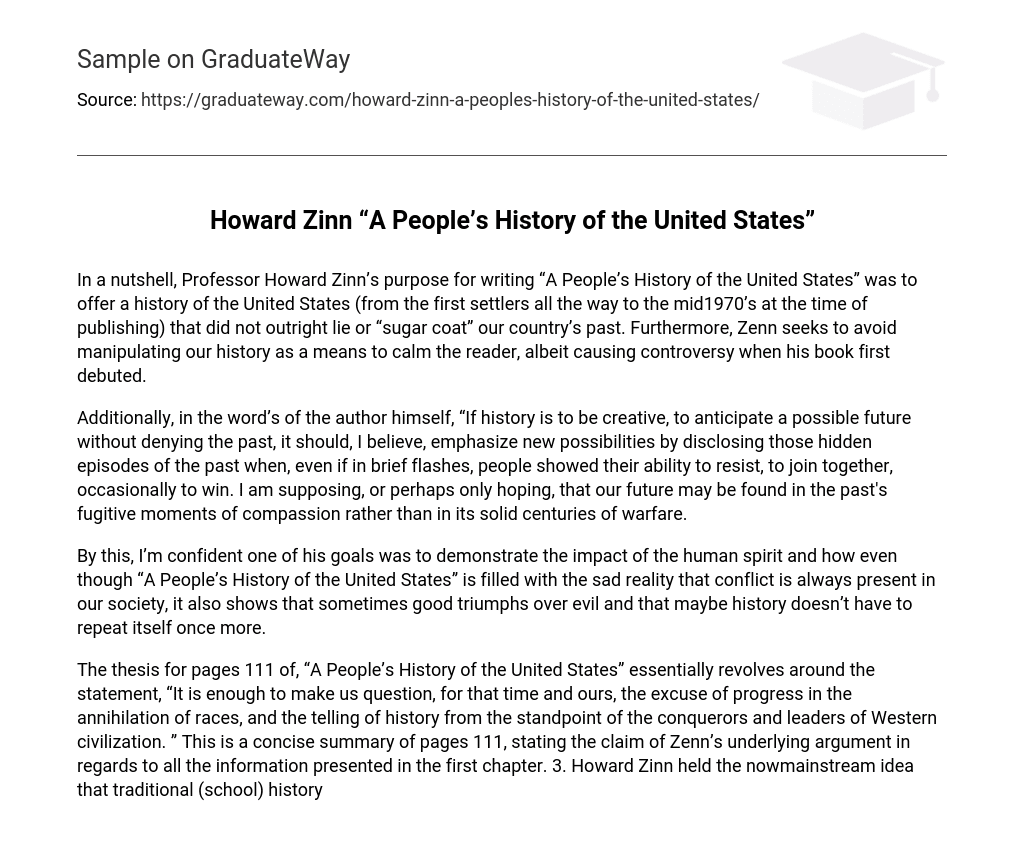Professor Howard Zinn wrote “A People’s History of the United States” to provide an honest and unfiltered account of the United States’ history from the early settlers to the mid-1970s. Unlike traditional narratives that distort or downplay the truth, Zinn’s objective was to present a transparent depiction of our country’s past. Consequently, this approach generated controversy upon the book’s initial release, as it deliberately avoided manipulating history to pacify readers.
Furthermore, as the author himself states, “If history is to be creative, to anticipate a possible future without denying the past, it should, I believe, emphasize new possibilities by disclosing those hidden episodes of the past when, even if in brief flashes, people showed their ability to resist, to join together, occasionally to win. I am supposing, or perhaps only hoping, that our future may be found in the past’s fugitive moments of compassion rather than in its solid centuries of warfare.
By expressing his confidence, it can be inferred that one of his intentions was to illustrate the significance of the human spirit. He aims to convey that although “A People’s History of the United States” acknowledges the perpetual existence of conflict in our society, it also highlights instances where good prevails over evil. Hence, suggesting the possibility that history can break its cycle of repetition.
The central theme of pages 1-11 of “A People’s History of the United States” is the exploration of the excuse of progress in the destruction of races and the biased perspective of conquerors and Western civilization in history. This concise summary encapsulates Howard Zinn’s argument throughout the first chapter, presenting his claim regarding all the information presented. It is notable that Zinn’s perspective is now widely accepted within mainstream thinking about traditional school history.





